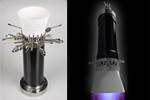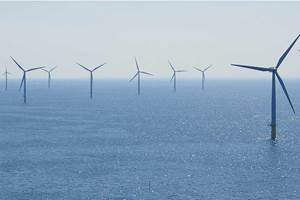University of Auckland, DLR researchers cooperate in space research
New Zealand and German space experts are partnering up for research into using carbon fiber for spacecraft and laser light technology to transmit data to Earth.

Photo Credit: iStock
The University of Auckland (New Zealand) and the German Aerospace Center (DLR, Augsburg, Germany) are partnering up to research using carbon fiber for spacecraft and laser light technology to transmit data to Earth.
The university-based projects are part of a joint research program between the two partners, and are two out of eight projects that were awarded a share of $8 million from the Ministry of Business and Innovation’s Catalyst Fund, which supports international science and innovation that benefits New Zealand. They will be led by associate professor John Cater, from the Department of Engineering Science in the Faculty of Engineering, and Dr. Nick Rattenbury, from the Department of Physics in the Faculty of Science. Both researchers have been working with the DLR since 2017.
“The DLR has excellent people, excellent facilities and a level of space research expertise that runs very deep,” says Dr. Cater. “We are delighted they want to keep on working with us.”
Specifically, Dr. Cater is working on the project looking at the use of carbon fiber-reinforced polymers (CFRP) for space launch vehicles and deployable structures such as solar panels and antennas that open once a spacecraft reaches its destination. New Zealand is said to have significant expertise creating products from carbon fiber from years in the yachting industry, and through aerospace companies such as Rocket Lab (Auckland, New Zealand).
“Carbon fiber composites offer many advantages over the metals traditionally used in space,” he says. “They are lightweight and offer tremendous flexibility on how they can be used for complex parts that have different mechanical requirements. Our research will be about how these materials survive and perform in space-like conditions and what happens to them on re-entry into the Earth’s atmosphere.”
Dr. Rattenbury’s project is about the use of free-space optical communications (or laser light technology) to transmit information from spacecraft down to Earth — in this case, to a DLR component that will be installed at the University of Canterbury Mount John Observatory at Takapō in New Zealand.
“Traditionally, getting information from space has involved radio waves. The alternative technology using laser light means that we are able to transmit more information more securely,” says Dr. Rattenbury. “As an optical astronomer, I am used to collecting information from stars. But this research is about collecting huge amounts of information from fast-moving spacecraft.”
The DLR is a research-only organization. It has a staff of more than 10,000 and an annual budget reported to be more than €3 billion (NZ $5 billion). It brings together more than 40 institutions and facilities around Germany. “By comparison, New Zealand is a young player in the industry and that has advantages,” says Dr. Cater. “It means we are a small community with a nimble infrastructure where things can happen quickly.”
Dr. Rattenbury notes that New Zealand’s strength also lays in the expertise held by several small companies that have been supplying the space industry for many years, making parts that end up in prime missions by major global space agencies. “That experience, and our willingness to look outwards for research and development opportunities, adds to our appeal as a partner for the DLR,” he adds.
Both researchers are also involved in a national partnership, led by the Robinson Research Institute at Victoria University of Wellington that is developing new electric propulsion systems for spacecraft.
Related Content
Women in the Composites Industry brings together women for networking, educational opportunities
Aiming to support the growth of women in this industry, the WCI industry group and its partners recently held its first live training event hosted by Owens Corning.
Read MoreUniversity of Sheffield researchers to drive structural health monitoring in U.K. infrastructure
The £7.7 million program, ROSEHIPS, anticipates exploitation of machine learning, sensing and digital twin technology for automated health monitoring in infrastructure, such as bridges, telecoms masts and wind turbines.
Read MoreASCEND program update: Designing next-gen, high-rate auto and aerospace composites
GKN Aerospace, McLaren Automotive and U.K.-based partners share goals and progress aiming at high-rate, Industry 4.0-enabled, sustainable materials and processes.
Read MoreCoriolis Composites installs AFP machine at Sabanci University
C1 robot contributes to technology development at the Integrated Manufacturing Technologies Research and Application Center (SU IMC) in Istanbul.
Read MoreRead Next
AE Industrial Partners to acquire stake in Firefly Aerospace
The leading provider of composites-intensive launch and in-space vehicles will expand AEI’s space transportation portfolio and grow Firefly’s future opportunities in the space market.
Read MoreMulti-composite thrust chamber aims to boost rockets, reduce cost for New Space economy
Black Engine uses new, microporous CMC liner for transpiration cooling and multiple lightweight composites in modular design that offers increased lifetime and lower maintenance versus current launch vehicle engines.
Read MoreFrom the CW Archives: The tale of the thermoplastic cryotank
In 2006, guest columnist Bob Hartunian related the story of his efforts two decades prior, while at McDonnell Douglas, to develop a thermoplastic composite crytank for hydrogen storage. He learned a lot of lessons.
Read More


























